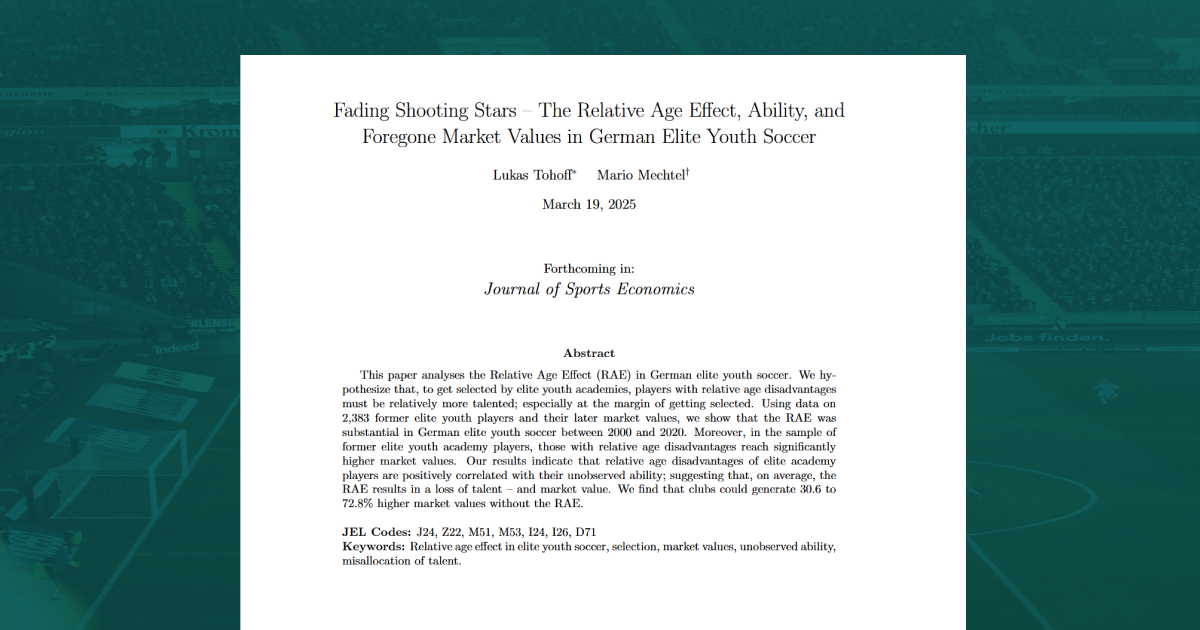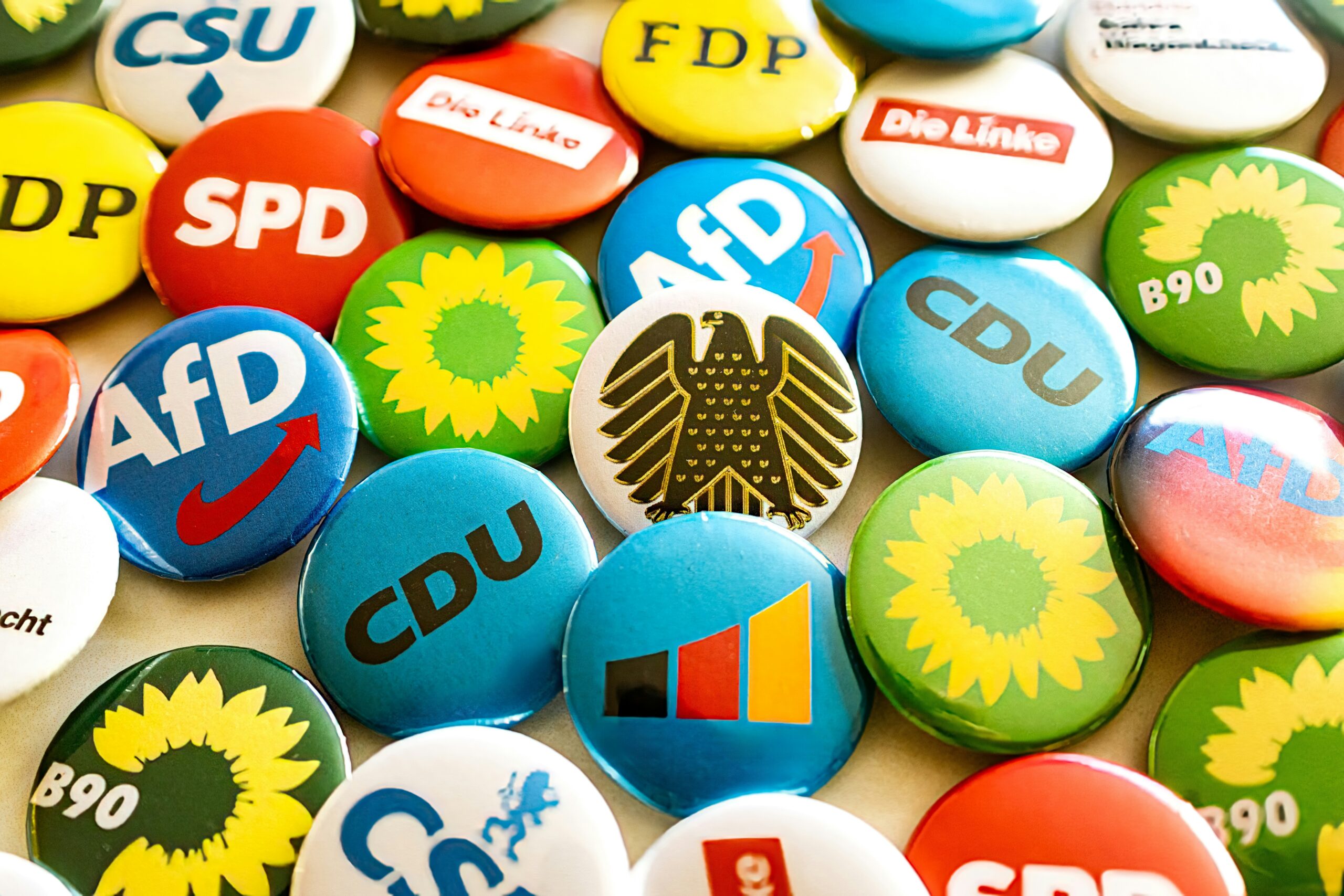Wirtschaftsdienst – a journal from ZBW – Leibniz Information Centre for Economics recently featured an insightful interview with our Director, Christian Dustmann, as part of their series “Challenges for the Labor Markets of the Future.”
In the interview, conducted by scientific editor Mark Kirstein, Professor Dustmann delves into the current opportunities and challenges facing the German labor market. The discussion covers various aspects of migration, including its impact on labor market dynamics, integration, and the broader socio-economic implications for Germany.
For the complete series and to access the original German text, please visit the publisher’s website. The English version of the interview is provided below.
Migration is not a Zero-Sum Game
WD: Migration research has two sides. There is a country from which people emigrate and a country to which people migrate. What developments have you seen since the last major wave of immigration to Germany, which was triggered, among other things, by the civil war in Syria?
CD: Germany has always been an attractive country for labor migrants and has been a country of immigration since the 1950s. In the 1960s alone, until the first oil crisis in 1973, the share of the workforce born abroad increased enormously. What has changed now is that many of these migration flows no longer come through the labor channel but through the refugee channel. This naturally brings many problems with it. Labor migrants and refugees differ in many ways. Refugees often come unprepared, have not intended to emigrate, and are therefore more difficult to integrate into the labor market. Labor migrants are usually prepared and come for jobs. There are therefore very large differences between these two migration movements. We have compared refugee migrants with economic migrants for various European countries, including the USA (Brell et al., 2020). There are significant differences in terms of labor market integration. It is unfortunate when these two types of immigration are mixed. Labor migration is a desired immigration from both sides. Refugee migration is regulated by the 1951 Geneva Convention on Refugees and the corresponding annexes. These are different migration movements that should continue to be separated as they come with different challenges.
In the 2010s, immediately after the Great Recession, we saw strong migration flows from European countries that were much harder hit by the recession than Germany, where this led to a relief of the tight labor market. After the Great Recession, we continuously saw a tight labor market, partly due to demographic developments, but also due to a high demand for labor, especially at the lower end of the educational distribution. The migration movements over the last decade have partly consisted of labor migrants – mainly from European countries – but also heavily from migrants who came to us due to refugee movements – very intensively since the Syrian crisis.
Large Differences Between Labor and Refugee Migration
WD: One of the current crisis hotspots as a trigger for migration movements is the Russian war of aggression in Ukraine. Are there already initial results on the integration of Ukrainian refugees into the German labor market? It is currently impossible to predict how long this situation will last, even if many Ukrainians might want to return to rebuild their country.
CD: You are addressing a very special problem. This involves a certain trade-off. When people come to us, whether from Ukraine now or from the Balkan region 20 to 25 years ago or from other countries where there is a conflict, these are not permanent arrangements. After the Balkan crisis, for example, many migrants who came to us from the former Yugoslavia were also sent back. For migrants, this means that it is unclear how permanent their stay in Germany will be. This reduces the incentives to integrate into German society or the labor market, for example by investing in human capital, especially the language, unlike in planned economic migrations.
Let’s take the example of Syria. The conflict arose very quickly. A large wave of refugees since 2015 was the result. Let’s take the Syrian baker who comes to Germany and can only properly continue his craft in Germany if he also undergoes training. Certifications are very important for the labor market in Germany. A completed vocational training gives him the opportunity to become self-employed in the future (with additional certifications). But if he then possibly has to return to Syria after five or six years, no one in Damascus cares whether he has completed a German apprenticeship or not. But during the three years of training, wages are much lower, so this investment is only worthwhile if he remains in Germany permanently. This is a problem with this type of migration, that the permanence of migration is very uncertain for both sides, which can lead to lower incentives to integrate into society and the labor market through investments that are expensive for the migrant.
WD: Which has negative consequences for both sides if one initially decided not to pursue this vocational training because one thought one would return quickly.
CD: Exactly. This leads to many wrong decisions. We saw this with the guest worker movements, where many came with a temporary intention, did not make the corresponding investments, and ultimately stayed permanently. We have examined such decision situations and precisely illustrated how the career paths of migrants are affected (Adda et al., 2022).
WD: Is the emigration movement out of Germany significant?
CD: If the opportunities are better elsewhere, then people naturally go. In the academic field, this was and is an issue. In the USA, working conditions and opportunities are often better. Emigration may also be attractive in other individual areas, but I don’t think Germany is one of the countries that particularly suffers from it. I was in Portugal just yesterday, where we also talked about this topic. Portugal has a bigger problem, and Albania has a huge problem. In Germany, it is very limited. Other European countries are trying to win back people in highly skilled professions through tax breaks.
Climate Change as Another Driver of Migration
WD: To what extent will climate change be a driver of future migration movements?
CD: Climate change will certainly be another driver of future migration movements. At the moment, climate change as the main reason for migration is still dominated by persecution and conflicts in the countries of origin, the lack of functioning institutions, and a lack of security and future prospects. This will certainly be exacerbated by climate change. This is the big challenge for us. If we look at the refugee migration flows of the last decades, these have always been movements initiated by conflicts in the countries of origin. What is happening now in the Middle East, the Ukraine conflict, the insecurity in many African countries, is leading many people to move to Europe. These flows will increase. Africa is facing enormous population growth, with the population doubling between 2019 and 2050. At the same time, the countries with the largest population growth are often also the countries with the greatest instability and a lack of security for their citizens.
Shaping Labor and Economic Migration with a View to Labor Shortages
WD: You have already emphasized how important it is to distinguish between labor migration and refugee movements. In the German labor market, demographic change is not only leading to a shortage of skilled workers but also exacerbating a general labor shortage. How does the situation regarding labor shortages in neighboring countries look? Does migration to Germany not worsen the situation in labor markets in neighboring countries, e.g., the Schengen area?
CD: Not necessarily. We have different developments. It is always unfortunate when countries with a large young population cannot integrate them into productive processes. We see this in South America and Africa, where countries with a very young population cannot find work. This is a double loss. In Germany, it is the opposite. We are currently working on a study looking at the change in inequality. Income inequality has decreased significantly in Germany – even before the introduction of the minimum wage. This is partly due to the fact that the German labor market has become very tight. There are fewer workers offering their labor relative to demand. Partly this is due to the retirement of the baby boomer generation. This problem can partly be solved with migration, which has also been done. We have seen a very strong increase in the number of foreign-born workers in the German workforce over the last decade.
A sensible migration policy must be aligned with the requirements of the labor market, but it must also go hand in hand with an integration policy. We made mistakes with guest worker immigration. Little attention was paid to integration. This led to segregation. This was particularly extreme in France with people from the Maghreb, which still causes extreme social tensions. This must be addressed early on.
A labor market policy that partly relies on migration must therefore go hand in hand with a sensible integration policy and must not bypass the labor market. There are certain shortage occupations, certain basic prerequisites for integrating into the German labor market, and accordingly, migration policy must be shaped. I think it is wrong to completely mix refugee policy with labor immigrant policy. These are two different types of migration; bridges can be built, but one must be careful to keep these two types of migration separate. We can control labor migration much better and also align it with the requirements of the German labor market than refugee migration. But, of course, in a country like Germany, demographic change must also be addressed with a strong capitalization of the economy. And that includes those self-check-outs in supermarkets or restaurants where there are no employees.
WD: That is also a positive message that migration is by no means a zero-sum game but helps to direct the labor supply across borders to regions where this potential is currently lacking. Your research repeatedly shows that the most important integration happens in the labor market (e.g., Arendt et al., 2022). By being employed and possibly further qualifying in this context and then applying for other positions that are closer to one’s actual level of education.
CD: The labor market is the best integrator. Integration into the labor market should go hand in hand with further training measures. I do not think it is advantageous to train people for a long time first and then try to integrate them into the labor market. The labor market partly does this itself. You learn the language when you work with German employees or when you have to read German descriptions, etc. You learn certain production processes when you work in the labor market, and the further training measures must then run intelligently in parallel. Parallel is much better than serial.
That is exactly the idea of labor mobility within the European Community, that countries with a surplus of labor are relieved by workers migrating to countries where the opposite is true. This worked excellently after the Great Recession when many workers from Eastern and Southern European countries came to us for a few years and then returned.
Collective Bargaining Autonomy as an Important Factor in the Labor Market
WD: The current debate is about raising the minimum wage to around 15 euros. Do you think this will affect migration to Germany, or is it not really a migration issue but an issue for workers already in Germany?
CD: I am a big fan of collective bargaining autonomy, which has worked quite well in Germany. This is what our latest research focuses on (Dustmann et al., 2024a). We observed a closing of the wage gap as early as four years before the introduction of the minimum wage in Germany in 2015. This is due to various processes, but partly also to the strengthening of unions vis-à-vis employers. The introduction of the minimum wage in 2015 certainly did not lead to job losses; our own research has shown this (Dustmann et al., 2022). But collective bargaining autonomy is a very important instrument that should not be neglected.
It is very difficult to answer your question about migration. One would have to look at the data to see how it affects foreign workers. This is a mixed issue. We have thought a lot about the fact that when workers with a foreign background work at wages below their productivity (as we show in Dustmann et al., 2024b), then it means that a minimum wage increase is beneficial for these workers because they will continue to be employed even if the wage they are paid increases. We are currently working on the evidence for this.
WD: Will you present the results at the meeting of the Verein für Socialpolitik?
CD: I will certainly present results from our recent research. Good empirical research takes a long time. We often work on a good study for at least five years. It’s just very time-consuming.
High Labor Productivity Possible into Old Age
WD: Large German companies like SAP, Bayer, and Volkswagen are currently offering so-called severance packages, mainly for very experienced employees. What is your assessment of these measures against the backdrop of the shortage of skilled workers in the German labor market?
CD: Given demographic developments, it is a necessity for us, but also a great challenge, to keep older workers productively in the labor market. This requires some rethinking. Production processes can certainly be changed so that they can be carried out very well by older workers. Technology is very helpful here. Nowadays, a road worker is no longer physically involved in the work; there are many machines, and this is also the case in many other work processes. In many areas, older workers, because they are much healthier today than they were 30 years ago, are also very capable of being more productive than younger workers because they are more experienced. We simply have to create opportunities to keep older workers in the labor market longer and adapt the labor market requirements so that they can be carried out productively by older workers. There are many attempts from Asian countries, especially Japan and Singapore, from which one can learn. But Germany should also become innovative.
WD: In political discourse, a more flexible retirement age is often discussed, which de facto aims at delaying retirement on average. Many of the workers who take advantage of such offers, such as retirement at 63, are often those who are still in relatively good physical condition and could continue to work productively. Many workers in physically demanding jobs, for example, cannot take advantage of these offers for financial reasons.
CD: If I have saved a lot of money, then the need to continue working is naturally lower. This is mainly the case in the groups you just mentioned. If I had a fairly low income over my life cycle, then it might be advantageous to work a little longer. It will be a demographic necessity to keep workers in the labor market longer. And, of course, for many workers, it is also a desire to stay in the work process longer. For many, it is not particularly attractive to sit at home all day. By making working hours more flexible, etc., solutions can be found, and I think that will happen.
WD: When we look beyond our economic blinkers, one reason for the loneliness of older citizens is the exit from the work context. The social environment then suddenly becomes much smaller.
CD: Exactly. One can draw on experiences of how older workers can contribute accordingly. I was just at a meeting of a large conglomerate in Portugal, and I was one of the younger visitors. Many were in their eighties, and it was amazing what ideas and contributions they made. Nowadays, you can stay productive well into old age.
WD: Are there any role models for Germany? Japan, for example, is pursuing a different model. They rely on innovations in robotics instead of migration.
CD: That is true; Germany is also doing a lot in the field of robotics. Germany is a leader in robotics alongside Japan. Not only but also due to similar industrial structures in mechanical and plant engineering and the production of cars, etc. The Japanese and Korean societies find it very difficult to address demographic changes through migration because they are very homogeneous societies where it is very difficult for migrants to integrate, and they also find it very difficult to integrate immigrants. I think this is a big disadvantage of these societies. This applies to a lesser extent to some countries in Europe. In Australia and the USA, identity is much easier to define than it is in France or, to some extent, in Germany. And this means that it is much easier for some countries to absorb migrants into the labor market and then integrate them socially than for others.
Research Data Availability in Germany
WD: What is the availability of data for labor market economics and migration research? You already mentioned that empirical labor market research has to be thought of in five-year cycles until individual migration waves are well understood.
CD: When I started, Germany was a data desert. There was the Socio-Economic Panel (SOEP), and that was it. Today, the situation is different. Today we work with administrative data, especially the IAB under the former leadership of Joachim Möller and now under Bernd Fitzenberger, which has made an enormous contribution to making data products available to the German and international research community. On the other hand, there are many data products that are available, but the corresponding institutions very much block the availability of the data.
WD: What would you wish for?
CD: There are, for example, foreign trade data that specifically represent trade relations at a very individual level and are very important for understanding Germany’s competitive situation in a global world economy. Such data are quite easily available in many other countries (e.g., in Denmark and France). In Germany, the process is enormously cumbersome, which means that German researchers work with data from other countries. We have a similar situation in many other areas of empirical economic research. We now have an enormous potential of very good young applied scientists who also want to work with German data and thus want to deal with a German problem. But if you don’t have access to this data, then they work for France or Denmark.
We now work with two large groups of data products. On the one hand, data created for scientific use – the German SOEP is such a data set. And then there are various data products that were not primarily collected for science but for other purposes, e.g., for statistical purposes like the social security statistics. These are very powerful data, and we have now very well understood how to work with this data. I work with many Danish products, where I can completely network these administrative datasets via identification numbers of individuals. For example, I can network the crime statistics with the labor market data or with information about the social environment during childhood. This means that research on social and economic processes can be conducted that is not at all possible in Germany because these linkages do not exist and because the individual datasets are very difficult to obtain. The Scandinavian countries are absolutely leading, and accordingly, a lot of research is done with Scandinavian data. I would wish that Germany could be a little more flexible in many areas.
Economic Policy Advice and Empirical Research
WD: Could the Danish model simply be transferred to Germany in a way that is compliant with German data protection regulations, and it is just not being done?
CD: This is a matter of interpretation. Even within Germany, there are very different interpretations regarding the availability of the same data products in the individual federal states, and there is a lot of blocking. This is also because Germany is very risk-averse, and changes can cause a lot of work in the short term. Data protection regulations are largely regulated at the European level, and the approach in Denmark is completely compliant with this. We need data in order to make important contributions to economic policy. If we cannot analyze the processes and procedures, we cannot understand them, and then we cannot give policy recommendations. The more information we have in the form of data, the better we can understand complex processes, and the better we can inform policy and contribute to more efficient policy measures.
WD: How is your channel for economic policy advice in Germany?
CD: Together with Alexandra Spitz-Oener, I am currently building a new institute in Berlin, the “ROCKWOOL Foundation Berlin Institute for the Economy and the Future of Work” (RFBerlin), and we will contribute to the German policy discussion. In the past, we did a lot in the UK because I teach and research at University College London. After Brexit, policy advice by scientists became less popular. Under Tony Blair and also in the 2010s under the Cameron government, we worked intensively on the fiscal effects of migration, the labor market effects of migration, and the effects of the opening up to Eastern and Central Europe in 2004.
We will soon publish an update on the fiscal effects, analyzing whether immigrants, differentiated by region of origin, make a positive or negative contribution to the fiscal system. The study refers to the UK, but the method we are developing can also be applied to German data. The narrative of the Cameron government at the time was that the contribution was negative. This was intended to convince Europeans that England could withdraw from labor mobility. This was completely wrong. In our first study on this topic (Dustmann & Frattini, 2014), we explicitly showed that migrants, compared to locals, make a much higher contribution through tax payments than they receive in transfer payments. This is partly because the training of labor migrants has already taken place, the school and/or university time does not have to be paid for by the English state, and, for example, a Polish worker comes to England and is immediately productive, perhaps stays for ten years, and then returns to Poland. This means that England does not have to contribute to the costs of old-age illnesses or pension payments. This type of migration, which we have seen to England, has not only greatly relieved the labor market but has also been fiscally very advantageous for England. The study caused quite a stir at the time. Many people did not like it, but it meant that it could no longer be claimed that migrants from Eastern Europe were welfare scroungers, as had previously been portrayed in many media.
There are many different opinions in economics, also due to different research results. Politicians are often open to what aligns with what they want to implement. This is beyond the control of scientists. I see our research as an important contribution to, on the one hand, drawing certain lines (as in the above research on the fiscal effects of immigration) and, on the other hand, stimulating discussions. For example, in 2009, we showed that income inequality in Germany had increased (Dustmann et al., 2009). No one had noticed this until then. Now we are showing that income inequality has decreased (Dustmann et al., 2024a). In a paper on the extension of maternity leave (Dustmann & Schoenberg, 2012), we showed that it has no impact on the education and wages of children, although this was repeatedly claimed as a reason for extending maternity leave. In the meantime, there are many studies that find exactly the same thing as us. Starting certain topics, where more research is then generated and thus contributing to the pool of knowledge that policymakers can draw on – that is how I see our role in public and political discussions.
WD: With Simon Jäger, a labor market economist has just become an advisor in the Federal Ministry for Economic Affairs and Climate Action. Are labor market economists currently in demand in Berlin?
CD: The labor market has always been important. Production consists of two components, one is capital, and the other is labor. Therefore, the labor market is a very important factor that must be understood in order not only to understand but also to be able to classify overall economic developments.
This interview with Christian Dustmann was conducted by Mark Kirstein (scientific editor) on June 28, 2024.
The original text belongs to Wirtschaftsdienst and is published here in translation under the CC-BY license. Translation by Yulia Aster, with no liability for potential errors due to the use of AI-based or similar translation software.
References
Adda, J., Dustmann, C. & Görlach, J. (2022). The Dynamics of Return Migration, Human Capital Accumulation, and Wage Assimilation. Review of Economic Studies, 89(6), 2841–2871.
Arendt, J. N., Dustmann, C. & Ku, H. (2022). Refugee Migration and the Labor Market: Lessons from 40 Years of Post-arrival Policies in Denmark. Oxford Review of Economic Policy, 38(3), 531–556.
Brell, C., Dustmann, C. & Preston, I. (2020). The Labor Market Integration of Refugee Migrants in High-Income Countries. Journal of Economic Perspectives, 34(1), 94–121.
Dustmann, C., Ludsteck. J. & Schönberg, U. (2009). Revisiting the German Wage Structure. Quarterly Journal of Economics 124(2), 843-881.
Dustmann, C. & Schoenberg, U. (2012). Expansions in Maternity Leave Coverage and Children‘s Long-Term Outcomes. American Economic Journal: Applied Economics, 4(3), 190–224.
Dustmann, C. & Frattini, T. (2014). The Fiscal Effects of Immigration to the UK. Economic Journal, 124(580), F593–F643.
Dustmann, C., Lindner, A., Schönberg, U., Umkehrer, M. & vom Berge, P. (2022), Reallocation Effects of the Minimum Wage. Quarterly Journal of Economics, 137(1), 267–328.
Dustmann, C., Gergs, C. & Schoenberg, U. (2024a), The Evolution of the German Wage Distribution Before and After the Great Recession, mimeo, University College London.
Dustmann, C., Ku, H. & Surovtseva, T. (2024b) Real Exchange Rates and the Earnings of Immigrants. Economic Journal, 134(657), 271–294.




